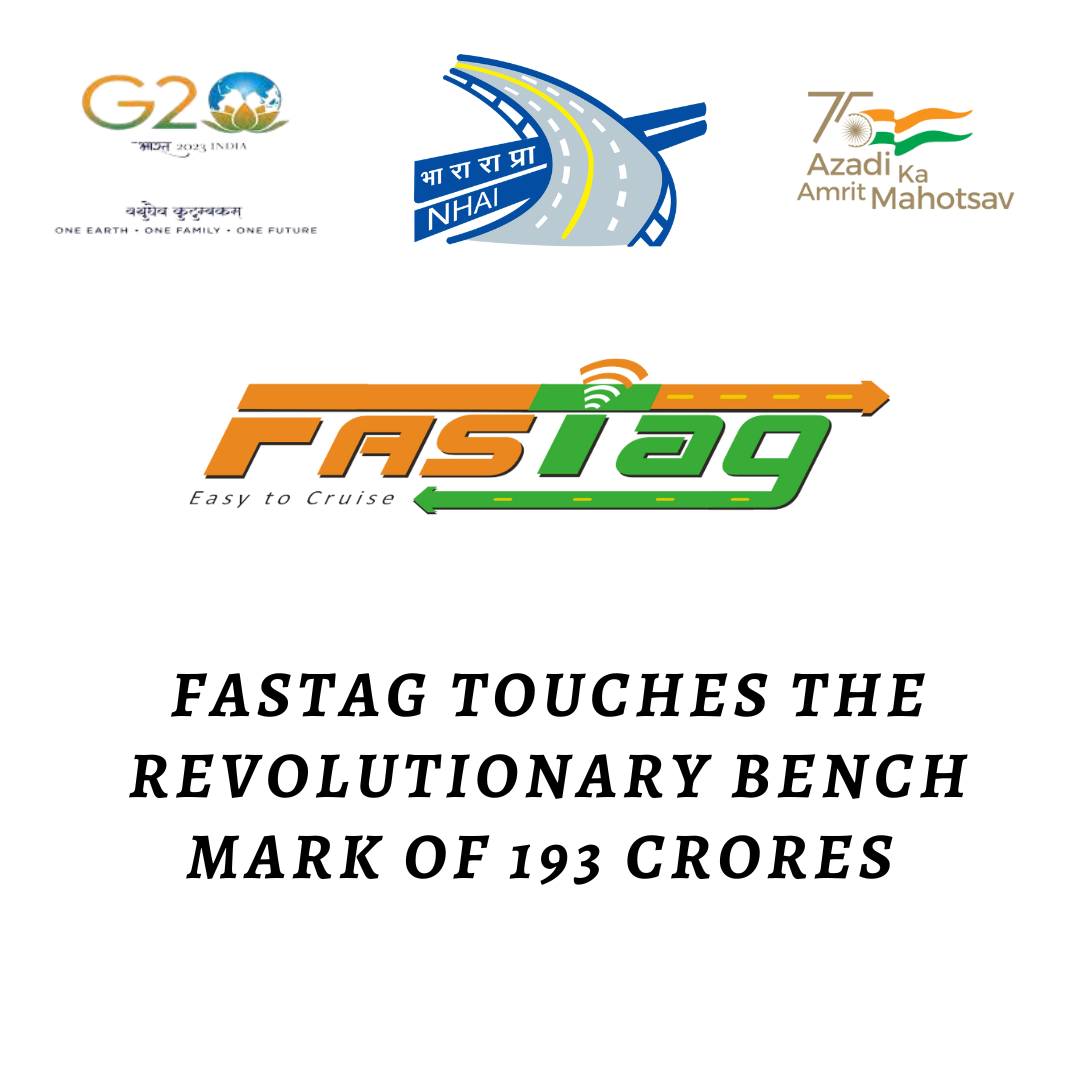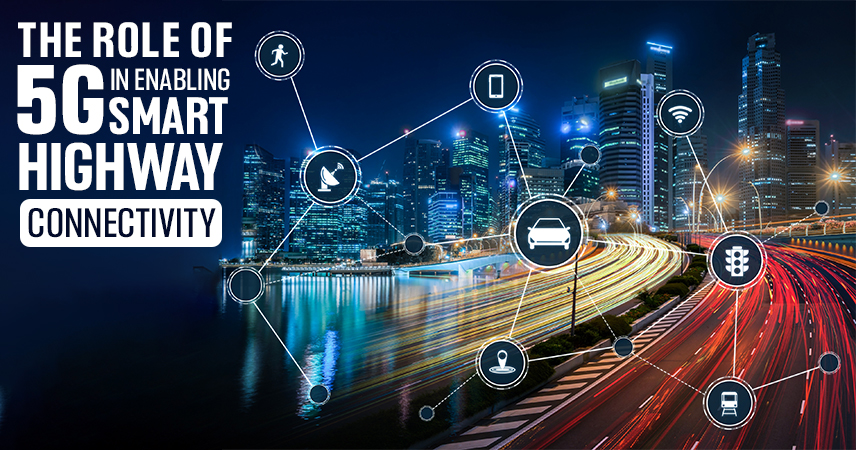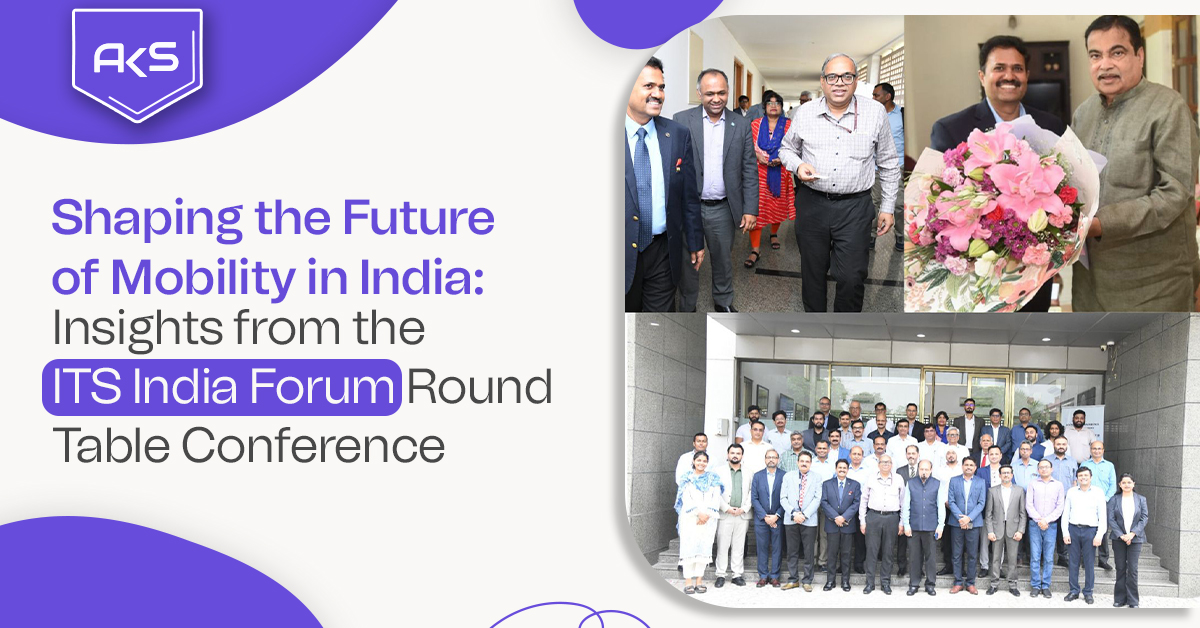
FASTag Touches the Revolutionary Bench Mark of 193 Crores
- By Admin
- 28-08-2023

FASTag
is a revolutionary technology that has transformed the way toll payments are
made in India. It was introduced by the National Highways Authority of India (NHAI)
in 2014, with the aim of reducing congestion at toll plazas and promoting
digital payments. FASTag has been a huge success since its inception, with the
latest figures showing that it has recorded transactions worth over 193 crores.
In this blog, we will explore the reasons behind the success of FASTag and how
it has benefited the Indian economy.
FASTag
is a simple and easy-to-use technology that allows commuters to make toll
payments without the need for cash. It is a radio frequency identification (RFID)
based system that is linked to a prepaid account. When a vehicle passes through
a toll plaza, the FASTag on the vehicle is automatically scanned, and the toll
amount is deducted from the prepaid account. This process is seamless and
eliminates the need for commuters to stop at toll plazas, thereby reducing
congestion and saving time.
On 29th
April 2023, the daily toll collection through FASTag system achieved a historic
milestone, reaching an all-time high collection of Rs. 193.15 crore, with 1.16
crore transactions recorded in a single day. Since FASTag was mandated by the
Government of India in February 2021, the number of toll plazas under FASTag
programme has increased from 770 to 1,228, including 339 state toll plazas.
With a
penetration rate of around 97 percent and over 6.9 crore FASTag issued to
users, the system has significantly improved the user experience by reducing
waiting times at NH Fee Plazas.
The
consistent and progressive adoption of the FASTag by highway users has not only
enhanced the efficiency of toll operations but also led to a more precise
valuation of road assets, attracting further investment in India's highway
infrastructure. In addition to its effectiveness in toll collection, FASTag has
also facilitated seamless and secure contactless payment for parking fees at
over 140 parking lots in 50+ cities across India.
The
success of FASTag can be attributed to several factors. First and foremost, it
is a convenient and hassle-free way of making toll payments. Commuters no
longer need to carry cash or wait in long queues at toll plazas. They can
simply recharge their FASTag account online or at any authorized bank or point
of sale location, and the toll amount is deducted automatically when they pass
through a toll plaza. This convenience has made FASTag a popular choice among
commuters, and the number of FAStag users has been increasing steadily.
Secondly,
FASTag has been successful because it is an efficient and cost-effective way of
collecting toll revenue. Traditional toll collection methods involve the use of
toll booths, which can be expensive to build and maintain. They also require a
large number of toll collectors, which adds to the operational costs. FASTag,
on the other hand, is a low-cost and highly efficient way of collecting toll
revenue. It eliminates the need for toll booths and reduces the number of toll
collectors required. This has helped the NHAI save money on operational costs
and increase revenue.
Another
reason for the success of FASTag is the government's push towards digital
payments. The Indian government has been promoting digital payments as part of
its Digital India initiative, and FASTag is a key component of this initiative.
By making FASTag mandatory for all vehicles, the government has been able to
promote digital payments and reduce the use of cash. This has several benefits,
including reducing corruption and promoting financial inclusion.
FASTag
has also been successful because of the various incentives and discounts
offered to users. The government has provided several incentives to encourage
people to adopt Fastag, including cashback offers and discounts on toll
payments. These incentives have helped to increase the adoption of FASTag and
promote digital payments.
Finally,
the success of FASTag can be attributed to the effective implementation and
management of the system by the NHAI. The NHAI has been proactive in promoting
FASTag and educating commuters about its benefits. They have also set up a
dedicated customer support system to address any issues faced by FASTag users.
This has helped to build trust among users and increase their confidence in the
system.
In
conclusion, FASTag has been a huge success since its introduction in 2014. Its
convenience, efficiency, cost-effectiveness, and government support have all
contributed to its popularity. The success of FASTag is not only a testament to
the effectiveness of the technology but also to the Indian government's
commitment to promoting digital payments and improving the country's
infrastructure. With more and more people adopting FASTag, we can expect to see
further improvements in the efficiency of toll collection and the reduction of
traffic congestion at toll plazas.




